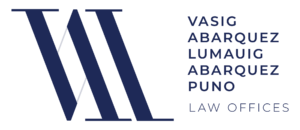
Branding and Trademark Protection Under the New Normal
—Carlo E. Abarquez, Partner
—Aidyl Pearl U. Perez, Associate
As the world is dealing with the COVID-19 pandemic, the challenges that businesses are facing – whether it be because of the current state of the global market or due to government policies in place – are also rapidly evolving. For businesses to ensure their survival and continued growth in these challenging times, the need to establish a digital presence under the New Normal is essential. With most consumers quarantined in their homes, and businesses not being able to operate at full capacity, a digital presence allows businesses to reach their target market without the need of physical interaction. In the digital arena of the New Normal, however, where information is easily accessible (and duplicated), businesses need to stay vigilant in protecting their brand.
Goodwill and Building Your Brand
In developing the online presence of a business, a strong brand can make the transition to a digital platform smoother. Consumers are more easily able to distinguish the business’ goods and services from others, resulting in a better and wider reach of its target market. Take for example, Jollibee Foods Corporation, whose customer engagement increased after establishing its digital presence through publication of online content and other articles that reached its target market.[1]
To have a successful brand, one must be consistent in communication and experience across different platforms. Building a brand is a continuous process, and the ongoing effort will result in establishing long-term relationships with consumers. Typically, this results in a steady increase in sales, more positive reviews and referrals from third parties. In turn, this leads to an advocacy for the product or service.
One of the easiest steps to build brand recall is the creation of a trademark. All the effort in establishing your brand generates goodwill, and increases the value of your trademark.
Trademarks and Advantages
What is a trademark? A trademark is a word, a group of words, sign, symbol, logo or a combination of these elements that identifies and differentiates the source of the goods or services of one entity from those of others.[2] In the Philippines, one can apply for and register a trademark with the Intellectual Property Office of the Philippines (“IPOPHIL”). Once, a trademark is registered, it is valid for ten (10) years and renewable at the end of each period for another ten (10) years, so long as the maintenance requirements are fulfilled. There are also registration mechanisms available with the IPOPHIL should the trademark need global protection, through a Madrid Protocol registration.
One of the main advantages of having a trademark registered is that the owner has the exclusive right to prevent others from using the same mark or even similar words, signs or symbols for similar goods or services; or use of the same or similar mark in a related industry, which may likely damage or adversely impact the interests of the owner over the registered mark.[3]
If anyone violates this right, the owner has the option of filing a civil, criminal or administrative case for trademark infringement and/or unfair competition. Penalties that may be imposed against the infringer include, payment of a fine ranging from Php50,000.00 to Php200,000.00, payment of damages, and imprisonment from 2 to 5 years.
Protect Your Trademark, Protect Your Brand
The coverage of protection for an owner of a registered mark is not limited to completely preventing another party from using the mark, but even extends to the ability to cause the infringer to stop the selling of fake or counterfeit goods. These laws are in place to prevent parties from illegally taking advantage of another business’ hard-earned goodwill – whether directly through counterfeit activities, or indirectly through misleading associations.
As an example, in their own advertising campaigns, parties may specifically aim to ride on the goodwill of a brand and use trademarks without the authority of the owners. This unauthorized use of trademarks may be intended to enhance their own sale of goods or services, which may even include misleading implications of associations with wider-known and reputable brands. While this may seem as a harmless act, in today’s digital world false associations with certain parties may threaten to damage a business’ reputation, brand and, ultimately, goodwill.
Thankfully, our intellectual property laws are in place to ensure that these infringers expose themselves to possible criminal and civil penalties, payment of fines, damages and imprisonment. But enforcement of these laws begins with a trademark owner’s move to exercise its rights. Thus, businesses are encouraged to stay vigilant in the protection of their brand — their goodwill – beginning with registration of marks to prosecution of would-be infringers.
***
Trademark laws and regulations not only protect the brand owner from unscrupulous third parties, but also seek to protect the general public from fraudulent misrepresentation in the sale of goods or services. After all the hard work and sustained effort to build a strong brand, it is only fair that commercial laws exist to protect the brand owner and ensure the quality of goods and services available to the general public. Clearly, the significance of branding, and protecting the hard-earned goodwill attached to that brand, is brought to the forefront under the New Normal.
[1] “Philippines’ well-loved is also the most-awarded brand in 2018: Jollibee cements marketing thought leadership with brand, executive honors” available at: https://businessmirror.com.ph/2018/12/21/philippines-well-loved-is-also-the-most-awarded-brand-in-2018-jollibee-cements-marketing-thought-leadership-with-brand-executive-honors/, last accessed: May 18, 2020.
[2] Section 121.1., 121.2. and 121.3., R.A. No. 8293 otherwise known as the Intellectual Property Code of the Philippines (“IP Code”).
[3] Section 147, IP Code.
